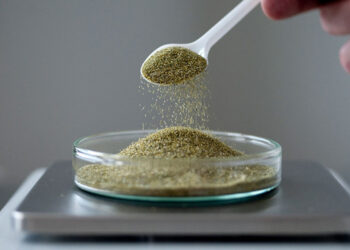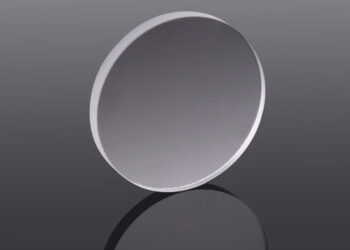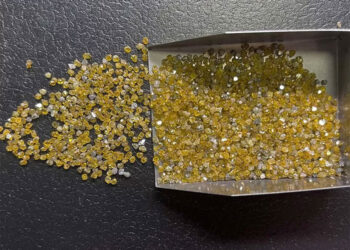Our Services
Contact info
We are always ready to help you. There are many ways to contact us. You may drop us a line, give us a call or send an email, choose what suits you most.
Need help?
15 W 47th St Suite #200 Second Floor, New York, 10036,United States
Tel: +1 917 302 9305
[email protected]
Ozone Production With Lab Grown Diamonds
Ozone Production with lab grown diamonds is a relatively recent research area. The process involves the use of diamonds with various optical and conductive properties. The article will provide examples of this process and will discuss the effects of charge on diamonds. There is also an emphasis on the optical properties of conductive diamonds.
Ozone concentration in diamonds should be a minimum of 115(+-5) mg*L-1). A higher concentration is desirable for better quality diamonds. Ozone is highly reactive and affects the physical and chemical properties of a diamond.
The hydroxyl content in diamonds can be measured through a quantitative analysis using fluorescent reagents. The fluorescent reagent 3-aminopropyltriethoxysilane reacts with amino and hydroxyl groups on the surface of the diamond. The resulting fluorescence intensity is measured by a Mindray MR-96A microplate reader.
Examples of ozone production with lab-grown diamonds
Ozone generators can be constructed to use electricity or water to create ozone. The secret ingredient in the generator is a solid lab-grown diamond, which functions as a scaffold for the electronic ions. This combination is powerful and efficient, and can be used for many different applications. information storage.
-
1
The diamond electrodes produce a mixture of oxidants, including hydroxyl radicals, ozone, and hydrogen peroxide. This type of oxidation requires a diamond electrode, which can be made from either a conductive ceramic or refractory metal. In some systems, the diamond is a thicker version of the electrode.
-
2
One of the challenges is measuring the strength of a single crystal diamond, which is difficult and costly to perform. Despite this, some studies have used indentation methods, which use a much smaller volume. However, the issue with this method is consistency of sample preparation. This affects the results and makes reproducing results difficult.
-
3
Lab-grown diamonds are not perfect imitations of natural diamonds, but they are made by using the same techniques as natural diamonds. They have similar optical properties and chemical structure. The main difference between a lab-grown diamond and a natural diamond is that the latter was created in a lab.
-
4
The most common way to produce ozone is through an electric discharge through a mixture of oxygen and dry air. This mixture contains about 75 percent ozone, while the other 75 percent is molecular oxygen. Concentrated ozone is difficult and dangerous to prepare due to its extreme instability and reactivity.
-
5
The process used to create lab-grown diamonds requires a large amount of energy. About half of the energy required for mining diamonds is used in the process. However, some companies are switching to renewable energy and CO2 capture technology to offset their carbon footprint. This shift is critical, and more companies need to make this transition to reduce their climate impact.
-
6
Another advantage of using diamond electrodes is that they can be driven at higher potentials than conventional electrodes. This allows for higher reaction rates. Another benefit of diamond is that it is inert in all organic solvents. Furthermore, diamond has a similar potential window to glassy carbon and sp2 carbon. However, some polycrystalline diamond electrodes have been reported to disintegrate under high positive voltages.
-
7
CVD diamonds can also be used in radiation detectors. This technology is especially effective for detecting ultraviolet light, which emits a strong ionizing radiation. This technology can reduce the risk of radiation in many applications. In addition, CVD diamonds have very low defects, which means they can be used as sensitive detectors.
-
8
Increasing use of ozone in water treatment continues to expand its range of uses. Its future looks bright for many areas of the water treatment industry. If you would like to learn more, get in touch with an expert in ozone!
Limitation of ozone production with diamonds
-
1
A new method for the production of ozone includes a diamond electrode with a free-standing diamond material on its anode. This new electrode can withstand higher power levels than previously known electrodes and can produce more ozone. The electrode is shown schematically in FIGS. 1A and 1B.
-
2
The rate of ozone production can be calculated by using bimolecular reaction rates. However, these rates require that the concentrations of peroxy radicals be known. This can be obtained from measurements of ambient levels or from box model outputs. This way, the rate of ozone production can be predicted in advance.
-
3
The method is based on the assumption that the ozone production rate in the reference flow tube is similar to that in the atmosphere. This assumption has been validated by box model simulations. The resulting rates were modeled for 30 May 2010. The inserts were color-coded according to time of day.
-
4
The new technique uses an OPR instrument developed for the IRRONIC field campaign. It incorporates two quartz flow tubes, an O3-to-NO2 conversion unit, and an Aerodyne CAPS NO2 monitor. Its conversion efficiency is greater than 99.9 percent regardless of ambient Ox levels. The instrument is designed to detect ozone production rates in both limiting and saturated regimes.
Related Projects

lab grown diamonds
Nanometer Modified Diamond Powder

lab grown diamonds
CVD SC Diamond Optical Window

lab grown diamonds
HPHT Monocrystalline Diamonds




